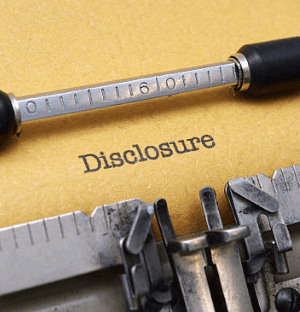Top Ten Triggers of Charter School Bond Default: #8 State Support for Charter Schools
With its focus on transparency and accountability in the high-yield charter school bond market, School Improvement Partnership is retained by dozens of public charter schools across the country to perform continuing disclosure reporting. From that work has emerged our assessment of the TOP TEN TRIGGERS OF CHARTER SCHOOL BOND DEFAULTS. We will explore one per week over the next ten weeks, leading up to the most common cause of charter school bond defaults. Number 10 was School Safety; Number 9 was Construction Risk.
Introduction. Since the United States Constitution left the responsibility of funding public schools in the hands of the individual states, the way that charter schools and traditional public schools are funded, supported and regulated can vary from state to state. There are three particular areas of state support which can change so drastically that they can trigger a charter school bond default: enrollment caps; funding inequality between traditional public and charter schools; and state budget crises.
Enrollment Caps. For an example of enrollment caps triggering a charter school bond default, we need look no further than the charter school six blocks from the Liberty Bell in Philadelphia ran by leader Dr. Walter Palmer. Though Dr. Palmer operated a Philadelphia charter school with over a thousand students, the authorizer argued that there was an enrollment cap of 645 students. The Pennsylvania charter school law prohibited enrollment caps, but a school could voluntarily agree to them. What’s a charter school to do when the authorizer won’t give them a new charter with the enrollment increase? In this case, Dr. Palmer admitted the extra students anyway, despite the enrollment cap forcing the school to forgo payment for the 400 extra students. The result: all 1,000 students were left searching for a new school, and the charter school bonds in default. The school was sold to developers, with the bondholders recouping cents on the dollar. The lesson: always make sure your charter expressly approves the number of students the charter school is serving to lower the risk of the bonds defaulting.
Inequality Between Traditional Public and Charter School Funding. Since the states and local districts control the funding, they also have the power to divvy up the funding as they see fit. The methods for allocating these funds and the amounts of funding received by charter schools, as compared to traditional public schools, vary depending on the state and – in some cases – the region within the state.
According to research conducted by the Center for Education Reform, 44 states and the District of Columbia have charter school laws in place (as of May 2019). However, this does not translate to equal funding between charter schools and traditional public schools; few states fund on an equal basis, even among those with strong charter school laws. A University of Arkansas study found inequities in charter school funding in 13 of 14 metropolitan areas that it studied. On average, the charter schools received $5,828 per pupil, or 27 percent, less than their district counterparts. Conversely, there are metropolitan areas that do an excellent job funding their charter schools, such as Houston, where charter schools receive 95 percent of the funding received by traditional public schools. It is therefore important for charter school investors to understand the funding system in place in states where they invest and how it changes.
State Budget Crises. An economic downturn can affect state and local tax revenues, thus the amount available to fund public education. A stark example of the effects of such crisis is the 2008 recession when state education budgets across the U.S. were slashed. In North Carolina, the Department of Public Instruction reduced funding by $840 million while the student population increased in the state. Although North Carolina education funding has increased since the recession, funding levels have only recently surpassed those of the 2008-2009 school year during the crisis. The United States Congress did enact the $787 billion American Recovery and Reinvestment Act in February 2009 in reaction to the recession which provided a stop gap funding boost to states with dragging tax revenue receipts. However, once the Act expired, states were left to their own resources to fund governmental functions, including education. States consequently enacted funding restrictions to close the gaps left in their budget. In 2011, for example, the Minnesota Legislature enacted several funding restrictions including a 35.7 percent holdback. Though the current holdback requirement in the state is much lower at 10 percent, which charter schools have operated with in the past, events like those in 2011 show that the requirement is subject to change based on the state’s fiscal condition. The extreme holdback during this time was detrimental to charter schools, causing some to cease operations and some to borrow funds from expensive sources to keep the doors open.
Similarly, the Pennsylvania charter schools were forced to operate on heavily restricted budgets in 2016. When Pennsylvania Legislature and its first term Governor could not reach agreement on the FY2016 Budget until December 29, 2015 – almost six months late, charter schools needed to scrape by on the previous year’s surpluses. In some instances, they resorted to factoring their per pupil payments to high interest rate borrowers.
Conclusion. Charter schools do not have any taxing authority and depend on the state and districts to provide suitable funding. Should the charter school not receive enough per pupil dollars, it may not have the ability to pay for debt service on its bonds, possibly causing an event of default. Changes in enrollment caps, funding inequality between traditional public and charter schools and state budget crises can hurt a charter school’s ability to pay debt service on its bonds. Investors are well-served to keep an eye on changes in State Support for Charter Schools, the eighth most common cause of charter school bond defaults. Next week: #7.



